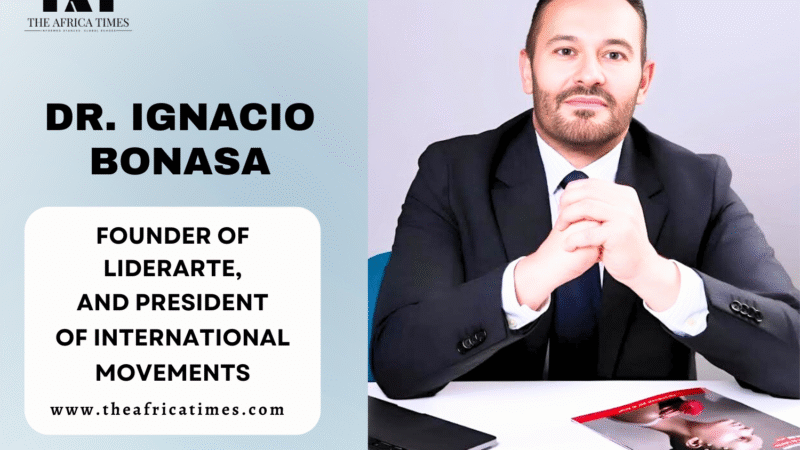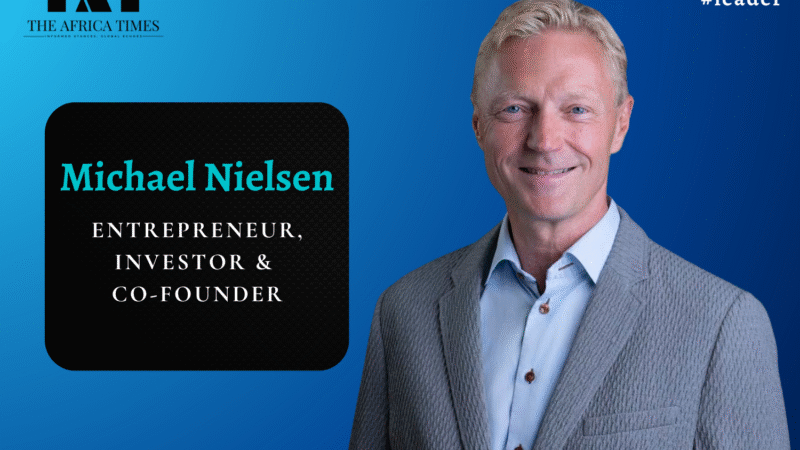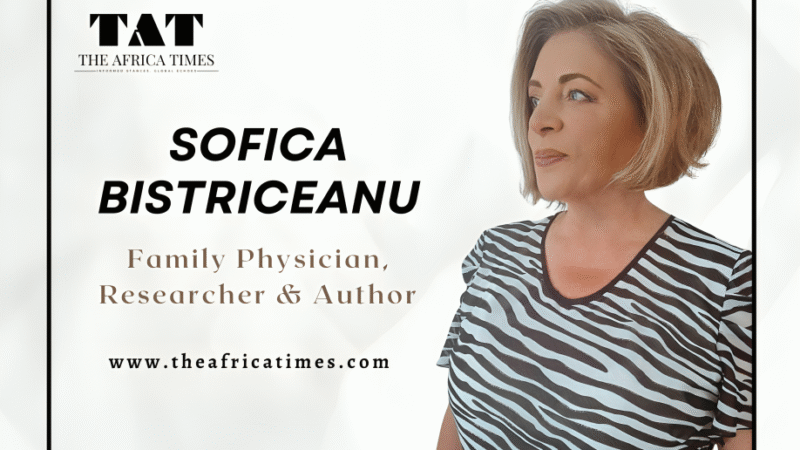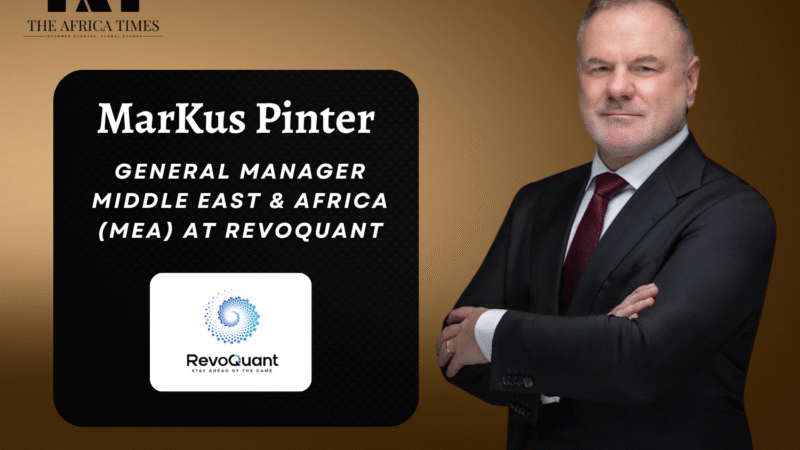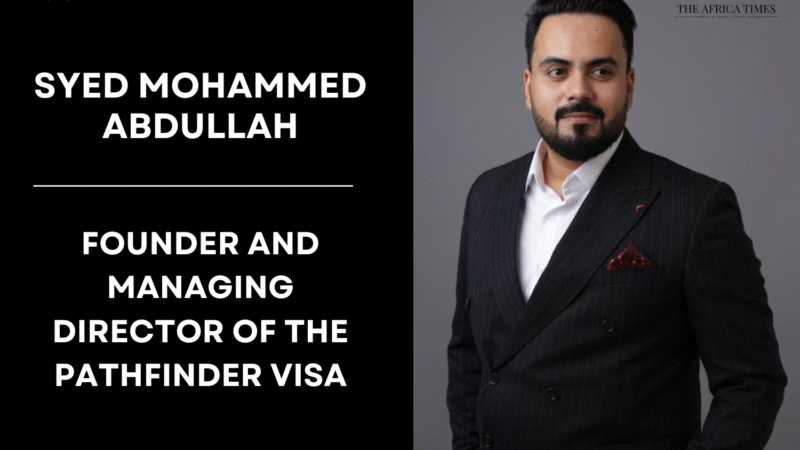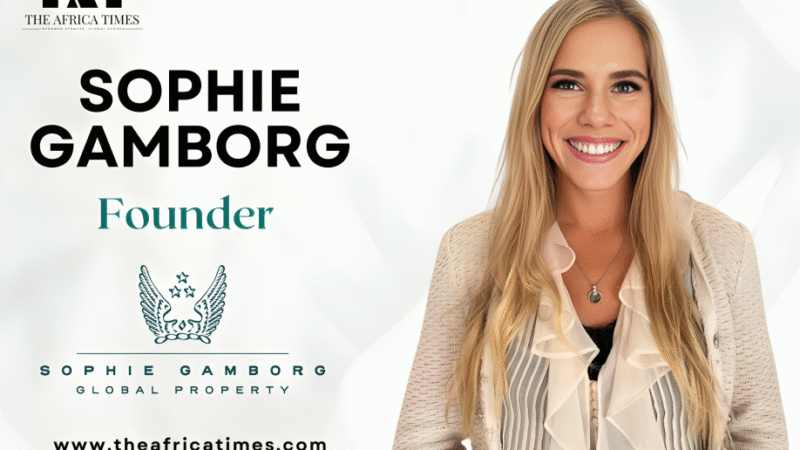Navigating The Dynamic Landscape: Insights From Mr. Mahmood S. Khan On Leadership, Innovation, And Adaptability In The Beauty And Fragrance Industry
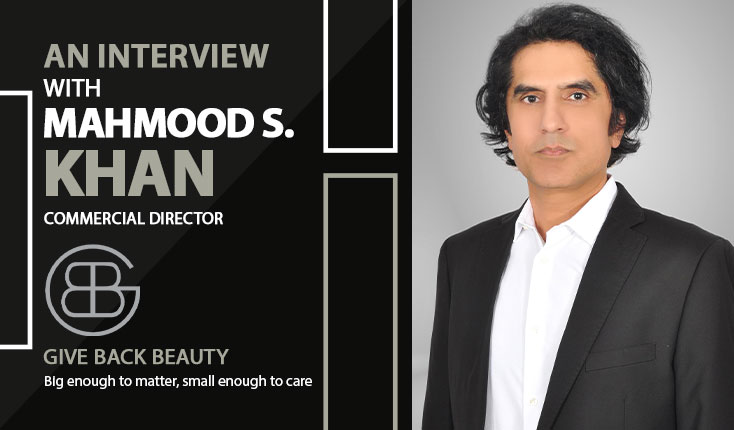
In this comprehensive interview with Mr. Mahmood S. Khan, an industry leader in the beauty and fragrance sector, key insights into strategic leadership, market entry, brand consistency, crisis management, and sustainable business practices are explored. Mr. Khan shares his wealth of experience and success stories, emphasizing the importance of adaptability, data-driven decision-making, and a customer-centric approach in navigating the ever-evolving beauty and fragrance industry. From negotiating impactful partnerships to leveraging digital tools for brand visibility, Mr. Khan’s strategies reflect a dynamic and forward-thinking approach, providing valuable lessons for professionals in the rapidly changing world of beauty and fragrance.
Nurturing Dreams
We started the interview by asking, “Can you share insights into your upbringing and educational journey? How did your childhood experiences and schooling shape your passion for flying, and what pivotal moments led you to pursue a post-graduation at Oxford University?”
Mahmood S.Khan replied, “I do fly as this is my passion & hold a PPL”.
About my education, “Though I come from a family that is widely respected and recognized in Pakistan, I remain grounded. My father played a significant role in the growth of Aramco in KSA, leading the Petroleum Engineering department for several years. My educational journey began at Sadiq Public School in Bahawalpur, one of Asia’s most prestigious institutions, before moving on to the esteemed FC College in Lahore for my undergraduate studies. I completed my post-graduate education at Oxford University in the UK, marking the latest milestone in my academic pursuit.”
Strategic Prowess & Cultural Navigation
The Emirates Times: Can you discuss a time when you had to develop a market entry strategy for a new fragrance or beauty product in a challenging region? How did you approach market research, competitor analysis, and channel strategy?
Mahmood S.Khan replied, “Yes, there have been several instances where the challenges were huge & I always believe to go with the process that involves several critical steps, including market research, which includes consumer preference & economic factors. Competitor analysis, which calls for SWOT & the channels to distribute and determining the channel strategy, which is a must to understand & includes retail, Online, Influencer collaboration etc.”
Then we asked, “Working across diverse regions like the GCC, Levant, Africa, and the CIS requires a deep understanding of cultural nuances. How do you ensure your strategies are culturally sensitive and effective?”
Mahmood S.Khan replied, “In navigating the diverse cultural landscapes of the GCC, Levant, Africa, and the CIS, I prioritize a foundation of deep cultural understanding and respect. Recognizing that a one-size-fits-all strategy is ineffective in such varied contexts, I ensure that our strategies are both culturally sensitive and locally relevant.
The first step in this process is comprehensive market research. This involves not only understanding consumer behaviors and preferences but also gaining insights into local customs, traditions, and values that influence these behaviors. Engaging local experts and consultants is crucial in this phase to interpret data correctly and avoid potential cultural misinterpretations.
Building on this foundation, I foster strong relationships with local partners and stakeholders. These collaborations are invaluable for their on-the-ground insights and their ability to navigate local regulatory and business environments effectively. Through these partnerships, we ensure that our strategies are not just imported but are genuinely co-created with local knowledge and expertise.
Training and empowering our local teams is another cornerstone of my approach. By ensuring that our employees on the ground have a strong voice in strategy development and execution, we can adapt more swiftly to market changes and cultural nuances. This empowerment also includes continuous cultural sensitivity training and leadership development, enabling our teams to lead with empathy and respect for local norms.
Furthermore, I advocate for a flexible and adaptive strategy framework. This allows us to adjust our approaches as we learn from each market, responding to feedback and evolving consumer preferences without compromising our core brand values.
Finally, communication plays a vital role. Whether it’s marketing campaigns, customer service, or community engagement, we ensure that our messaging is respectful, inclusive, and tailored to resonate with the local audience. This might mean adapting visuals, storytelling, or even product offerings to align with cultural expectations and preferences.
In summary, ensuring culturally sensitive and effective strategies in diverse regions is an ongoing process of learning, adaptation, and collaboration. By grounding our efforts in respect for local cultures and investing in strong local partnerships, we can achieve not only business success but also contribute positively to the communities we serve.”
Harmonizing Global Presence
The Emirates Times: Given our portfolio of brands like Chopard, Elie Saab, Tommy Hilfiger, Philipp Plein, Ice Berg, Pink Sugar & others to join. how would you ensure brand consistency across diverse markets such as the GCC, Sub-Saharan Africa, and the CIS, while also localizing the marketing approach?
Mahmood S.Khan replied, “To navigate the complexities of maintaining brand consistency across the diverse markets of the GCC, Sub-Saharan Africa, and the CIS, while also tailoring our marketing strategies to meet local preferences and cultural sensitivities, we would employ a nuanced approach that balances global brand standards with local market insights.
Some elaborative key strategies include:
Centralized Brand Messaging: Establish a core brand message that encapsulates the essence of our brands like Chopard, Elie Saab, Tommy Hilfiger, Philipp Plein, Ice Berg, Pink Sugar & others ensuring that this message resonates across all markets. This involves creating a brand guideline that includes key messaging, tone of voice, and visual identity standards to be adhered to globally.
Local Market Insights: Conduct thorough market research within each region to understand local consumer behaviors, preferences, and cultural nuances. This research will inform how we can adapt our marketing strategies to align with local tastes and values without compromising the brand’s identity.
Cultural Sensitivity / Adaptation: Customize marketing materials and campaigns to reflect local cultures and languages, ensuring relevance and resonance with the target audience. This might involve local partnerships, ambassadors, or events that align with the brand’s image and appeal to local sensibilities.
Consistent Quality and Experience: Ensure that the quality of products and the customer experience is uniform across all markets. This consistency reinforces the brand’s reputation and builds trust among consumers worldwide.
Digital Platforms: Utilize digital marketing and social media platforms to maintain a consistent brand presence while also targeting local audiences with region-specific content.
Monitoring: Regularly monitor market responses and gather feedback from each region to continuously refine and adapt strategies. This ongoing evaluation ensures that the brand remains dynamic and responsive to changing market demands and consumer preferences.
By implementing these strategies, we aim to achieve a harmonious balance between maintaining the global integrity of our brands and embracing the unique aspects of each market. This approach will enable us to build strong, consistent brand identities while also achieving meaningful local engagement and loyalty.”
Building Strong Leaders
The Emirates Times: As a leader with a Master’s in Organizational Leadership, how do you cultivate leadership within your teams, especially in a culturally diverse and geographically dispersed region?
Mahmood S.Khan replied, “To cultivate leadership within teams, especially in culturally diverse and geographically dispersed regions, leveraging my Master’s in Organizational Leadership, learned from Saad Business School, University of Oxford, I employ a multifaceted approach centered on inclusivity, empowerment, and continuous development:
Fostering an Inclusive Culture: Emphasize creating an environment where every team member feels valued and included, irrespective of their cultural or geographic background. This involves recognizing and celebrating diversity within the team, encouraging open dialogue, and ensuring that all voices are heard and respected. By promoting an inclusive culture, we can harness a variety of perspectives, fostering innovation and creativity.
Empowering Local Leaders: Identify and empower local leaders within each region or team. These individuals understand their local context better than anyone and can serve as cultural liaisons, ensuring that leadership principles are adapted and applied in ways that resonate locally. Empowering them not only aids in effective leadership distribution but also ensures that initiatives are more relevant and impactful.
Customized Leadership Development Programs: Develop and implement leadership training programs tailored to the unique needs of diverse teams. This includes blending universal leadership principles with specific cultural nuances. Such programs should be flexible, allowing for customization according to regional needs, and should focus on developing skills that are critical for leading in a multicultural environment, such as cross-cultural communication, empathy, and adaptability.
Communication and Collaboration: Utilize technology to foster communication and collaboration across different regions. Regular video conferences, virtual team-building activities, and collaborative online platforms can help bridge the geographic gap, promoting a sense of unity and shared purpose. Encouraging cross-regional projects can also provide team members with opportunities to lead and work in diverse teams, enhancing their leadership skills and cultural competence.
Coaching: Implement a global mentorship and coaching program that pairs emerging leaders with experienced executives. This program should be designed to transcend geographical and cultural boundaries, providing mentees with exposure to global leadership styles and practices. Through one-on-one coaching, emerging leaders can receive personalized guidance, feedback, and support, accelerating their development.
Continuous Improvement: Establish a robust feedback mechanism that allows team members to share their insights and experiences regarding leadership practices and their effectiveness in different cultural contexts. This feedback should be used to continuously refine leadership development programs and strategies, ensuring they remain effective and relevant.
Lead by Example: The key & finally, embody the leadership qualities you wish to cultivate in your team. Demonstrate empathy, cultural sensitivity, and an inclusive leadership style. By setting a positive example, you can inspire your team members to emulate these behaviors, fostering a culture of leadership throughout the organization.
By integrating these strategies, we can cultivate effective leadership across culturally diverse and geographically dispersed teams, ensuring that every team member feels empowered, valued, and equipped to lead within their specific context.”
Revolutionizing The Skyways
The Emirates Times: Travel retail is a unique segment. Can you share an innovative strategy you’ve implemented or would implement in travel retail to boost sales of our fragrances and beauty products?
Mahmood S.Khan replied, “In the distinctive and highly competitive environment of travel retail, an innovative strategy must be multifaceted, leveraging the unique opportunities this segment presents for brands, especially in the fragrances and beauty products categories. Here’s a strategy I would consider implementing, drawing from both industry best practices and fresh, innovative approaches such as:
-
Customization and Personalization
The Key: Introduce customization stations at key travel retail locations where customers can personalize their purchases. This could include engraving on perfume bottles, customizable packaging, or even creating a bespoke fragrance blend. The idea is to offer a unique, memorable experience that travelers are unlikely to find elsewhere, adding a personal touch to their purchases.
Implementation: Partner with airports and travel retail spaces to set up kiosks or pop-up stores that offer these personalization services. Use digital interfaces to make the customization process engaging and efficient, ensuring travelers can complete their personalized purchases without significant delays.
-
Exclusive Travel Retail Products
Develop exclusive product lines or limited editions only available in travel retail outlets. This exclusivity can attract customers looking for unique products and gifts, leveraging the impulse buying behavior common in travel retail environments.
And Implent: Collaborate with product development teams to create these exclusive lines, ensuring they’re designed with traveler preferences in mind. Market these exclusives effectively through digital platforms, in-flight magazines, and at the point of sale to build anticipation and demand.
-
Digital Integration and Omnichannel Experience
Introduce & enhance the customer journey by integrating digital tools that connect the pre-travel planning phase with the in-airport experience. For instance, allow customers to explore products, reserve items, or even make purchases online, with the option to pick them up at airport stores.
And plan to Implement & develop a mobile app or website feature specifically for travel retail customers, offering functionalities like virtual try-ons, product reservations, and seamless payment options. Ensure the pickup process is fast and convenient, ideally allowing customers to collect their purchases as they navigate through duty-free areas.
-
Leverage Data Analytics for Tailored Marketing
Data utilization: Use data analytics to gain insights into the preferences and buying behaviors of travel retail customers. This information can inform targeted marketing campaigns, personalized product recommendations, and strategic product placement within travel retail spaces.
And implement: Collect and analyze data from sales, customer interactions, and digital platforms. Use these insights to tailor marketing efforts, adjusting product offerings and promotional strategies based on customer profiles and preferences specific to different travel retail locations.
-
Strategic Key Brand/s Collaborations
Thought: Forge strategic collaborations with airlines, airports, and other travel-related services to create co-branded experiences and products. These partnerships can enhance brand visibility and provide access to exclusive customer segments.
And Implementation: Identify potential partners within the travel industry that align with the brand’s values and customer base. Develop joint marketing campaigns, exclusive product bundles, or co-branded experiences that can be offered as part of a travel package or loyalty program.
Implementing above strategies requires a keen understanding of the travel retail segment’s unique dynamics, including customer behavior, operational challenges, and the regulatory environment. By focusing on personalization, exclusivity, digital integration, data-driven marketing, and strategic collaborations, a brand can significantly enhance its appeal and sales performance in the travel retail space, creating memorable experiences that resonate with global travelers.”
Crises Across Borders
The Emirates Times: Can you provide an example of a crisis you managed that affected multiple markets, such as regulatory changes or a PR issue? How did you navigate the situation, and what was the outcome?
Mahmood S.Khan replied, “In my experience, managing a crisis that affects multiple markets requires a strategic and sensitive approach, emphasizing swift action, transparency, and adaptability. One notable instance involved regulatory changes in the Middle Eastern import strategy / registration processes, sanitary requirements, local municipality registrations that impacted our operations across several divisions, including markets in GCC, CIS & Africa, due to the interconnected nature of our supply chains and product standards.
The first step in navigating this situation was to form a cross-functional crisis management team, including legal, communications, and operations experts, to assess the impact thoroughly and develop a coordinated response plan. Recognizing the importance of clear and consistent communication, we prioritized engaging with all stakeholders—employees, customers, suppliers, and regulators—to explain the situation, our actions to comply with the new regulations, and how we intended to minimize disrutions.
Simultaneously, we explored alternative supply chain solutions and product adaptations to meet the new standards without compromising quality or significantly increasing costs. This required close collaboration with our R&D and supply chain partners to ensure agility in our operations.
Throughout the crisis, we maintained an open line of communication with regulatory bodies to ensure our compliance efforts were aligned with their expectations and to advocate for our industry’s interests. By doing so, we not only navigated the regulatory changes successfully but also emerged as a thought leader advocating for practical and fair regulations that balance safety, innovation, and market needs.
The outcome was a testament to our team’s resilience and adaptability. We managed to minimize disruptions, maintain market share, and even identified new opportunities for innovation and efficiency improvements. This experience underscored the importance of preparedness, collaboration, and leadership in turning challenges into opportunities for growth and improvement.”
Digital Mastery
The Emirates Times: How have you leveraged digital tools and e-commerce platforms to enhance brand visibility and sales in previous roles, and how would you apply this experience at Give Back Beauty?
Mahmood S.Khan replied, “In my previous roles, I’ve strategically leveraged digital tools and e-commerce platforms to significantly enhance brand visibility and sales, focusing on a multi-pronged approach that integrates data analytics, targeted marketing, and personalized customer experiences. By harnessing the power of digital analytics, we were able to gain deep insights into customer behavior and preferences, enabling us to create highly targeted marketing campaigns. These campaigns utilized SEO, social media advertising, and email marketing to reach potential customers at various stages of the buying journey, effectively increasing brand awareness and driving sales.
One key strategy was optimizing our online presence through SEO and content marketing, ensuring that our brand ranked highly in search engine results for relevant keywords. This not only improved visibility but also attracted quality traffic to our e-commerce site. Additionally, we embraced social media platforms to engage with our audience, using both organic and paid content to showcase our products, share brand stories, and foster a community around our brand.
Another significant aspect was enhancing the e-commerce customer experience. This involved streamlining the online shopping process, implementing user-friendly website designs, and providing personalized shopping experiences through AI-driven recommendations. We also focused on omnichannel strategies, ensuring a seamless transition between online and offline touchpoints for our customers.
At Give Back Beauty, I would build on this experience by first understanding the unique aspects of our target markets and customer base. This would involve a thorough analysis of market trends, consumer behaviors, and the competitive landscape specific to the beauty and fragrance industry. With this understanding, I’d focus on developing a digital strategy that leverages the latest e-commerce technologies and marketing tools to enhance brand visibility and sales. This would include:
Data-Driven Insights: Utilizing advanced analytics to tailor our marketing strategies and product offerings, ensuring they meet the specific needs and preferences of our diverse customer segments.
Digital Marketing and Social Media: Crafting compelling, targeted campaigns that resonate with our audience, leveraging influencers and brand ambassadors who align with our brand values to extend our reach.
E-Commerce Optimization: Enhancing the online shopping experience with a focus on mobile optimization, user experience (UX) design, and personalized content, to convert visits into sales.
Customer Engagement: Implementing programs that reward engagement and loyalty, using digital platforms to create a community around our brand values, particularly our commitment to giving back.
Innovation and Agility: Staying ahead of digital trends and being ready to pivot our strategies based on real-time data and evolving consumer behaviors.
By applying these strategies at Give Back Beauty, I am confident we can not only enhance brand visibility and sales but also create meaningful connections with our customers, aligning with our brand’s mission and values.”
Embedding Purpose into Practice
The Emirates Times: Give Back Beauty has a commitment to giving back. How would you integrate sustainability and ethical considerations into our business strategy across the regions you would be responsible for?
Mahmood S.Khan replied, “At Give Back Beauty, our commitment to giving back is not just a part of our brand identity; it’s a guiding principle that influences every aspect of our operations. Integrating sustainability and ethical considerations into our business strategy across all regions involves a multifaceted approach that aligns with our core values while respecting local cultures, regulations, and market dynamics.
Sustainable Sourcing: Prioritize partnerships with suppliers who adhere to sustainable and ethical sourcing practices. This includes ensuring that raw materials are harvested in an environmentally friendly manner and that all workers are treated fairly and work in safe conditions.
Eco-friendly Packaging and Operations: Implement initiatives to minimize our environmental footprint through the use of eco-friendly packaging and optimizing operations for energy efficiency. This would involve assessing the lifecycle impact of our products and packaging in each region to identify opportunities for improvement, such as using recyclable materials or reducing waste in our supply chain.
Community Engagement and Investment: Deepen our commitment to giving back by engaging with communities in the regions we operate in.
Transparency and Accountability: Ideally foster a culture of transparency and accountability by regularly reporting on our sustainability and ethical practices. This includes not only our successes but also the challenges we face and the steps we’re taking to address them.
Innovation and Collaboration: To introduce & encourage innovation in sustainable practices by collaborating with startups, academic institutions, and other organizations that are developing new technologies and solutions.
Integrating these practices requires a proactive and thoughtful approach, one that is continuously evolving to meet the changing expectations of consumers and the global challenge of sustainability. By embedding these principles into every aspect of our business strategy, we can ensure that our commitment to giving back is reflected not just in what we say, but in what we do. This will not only strengthen our brand and customer loyalty but also contribute to a more sustainable and ethical future.”
Strategic Integration & Alliances
The Emirates Times: How do you gather and utilize customer insights from diverse markets to influence product development, marketing strategies, and retail experiences?
Mahmood S.Khan replied, “In the complex and varied landscape of global markets, understanding and leveraging customer insights is crucial for tailoring our offerings to meet local needs while maintaining a cohesive brand identity. My approach to gathering and utilizing these insights is structured yet adaptive, ensuring that we remain responsive to the nuances of each market.
- 1. Multifaceted Data Collection
To gather comprehensive customer insights, I employ a blend of qualitative and quantitative methods. This includes conducting surveys and focus groups to gather feedback on products and shopping experiences, and engaging with social media listening tools to understand broader consumer sentiments. Additionally, in-market teams play a crucial role in providing on-the-ground insights and local consumer trends, adding depth to our data collection efforts.
- Customer Segmentation
With data from diverse markets, I attempt to apply advanced analytics to segment customers based on their behaviors, preferences, and purchasing patterns. This segmentation enables us to tailor our product development and marketing strategies to address the specific needs and desires of different customer groups, ensuring relevance and resonance in each market of my region.
- Localized Product Development:
Utilizing insights from each segment, we adapt and innovate our product offerings to meet local tastes and preferences. This might involve variations in product formulas, packaging, or even entirely new products designed for specific markets. The goal is to ensure that our products not only meet the functional needs of our customers but also resonate with local cultural and aesthetic preferences.
- Tailored Marketing Strategies:
Customer insights directly inform our marketing strategies, enabling us to create targeted campaigns that speak to the hearts and minds of our diverse customer base. This involves not only adapting messaging and imagery to reflect local cultures and values but also choosing the right channels and influencers to amplify our message effectively with the help of local distribution partners.
- Personalized Retail Experiences:
In the retail space, whether online or in physical stores, we are planning to leverage customer insights to create personalized shopping experiences. This will include localized website content, personalized product recommendations, and in-store experiences that reflect local tastes and shopping behaviors. By making each customer feel seen and valued, we enhance loyalty and encourage repeat business.
- Continuous Feedback Loop:
Finally, it’s vital to establish a continuous feedback loop, where customer responses and market performance data are regularly analyzed to refine and adjust our strategies. This agile approach allows us to stay ahead of market trends and continuously improve our offerings based on actual customer feedback.
The application & introduction of these strategies, the key is to balance global brand consistency with local market relevance. By effectively gathering and utilizing customer insights from diverse markets, we can ensure that our product development, marketing strategies, and retail experiences are not only aligned with our overall brand vision but also deeply connected to the unique needs and preferences of our customers in each region.”
The Emirates Times: Discuss a time when you successfully negotiated a partnership or collaboration that significantly benefited your company. What were the key factors to your success?
Mahmood S.Khan replied, “In my diverse roles, I’ve successfully negotiated distribution partnerships with local entities, facilitated several mergers and acquisitions, and served as a Group Advisor for numerous companies within the Perfumes & Cosmetic Industry in the region, all on a voluntary basis and without charge. I am still engaged in such.
My contributions encompassed conducting thorough due diligence, performing in-depth audits, meticulously analyzing business plans, and devising strategic navigation plans to ensure the success of these ventures. However, due to confidentiality agreements, I’m unable to disclose specific names publicly.”
Strategic Financial Management
The Emirates Times: Explain how you’ve managed budget allocations across different markets to maximize ROI. Can you share an example of a financial strategy that led to significant revenue growth?
Mahmood S.Khan replied, “In my role overseeing budget allocations across various markets, my primary objective has been to maximize ROI by strategically investing in areas with the highest potential for growth and impact. This involves a rigorous analysis of market trends, consumer behavior, competitive landscapes, and internal performance metrics to inform our allocation decisions.
Approach
Data-Driven Decision Making: Utilizing data analytics to assess the performance of each market and identify trends that indicate potential for growth or areas needing improvement. This involves not just looking at past performance but also predictive analytics to forecast future trends.
Segmentation and Prioritization: Segmenting markets based on their growth potential, strategic importance, and alignment with our long-term goals. This allows for prioritizing investments in markets that offer the best opportunity for substantial ROI, while also considering the need for a balanced portfolio that mitigates risk.
Flexible Budgeting: Implementing a flexible budgeting approach that allows for reallocation of resources as market conditions change. This agility ensures that we can capitalize on emerging opportunities or pivot away from underperforming investments quickly.
Cross-functional Collaboration: Working closely with marketing, sales, product development, and other departments to ensure that budget allocations are aligned with overall business strategies and objectives. This holistic approach ensures that investments are driving towards common goals.
Example of a Financial Strategy Leading to Revenue Growth:
A notable example of a financial strategy that significantly increased revenue involved reallocating marketing budgets towards consumer benefit plans during covid in a key market showing rapid business growth. After a thorough analysis of consumer behavior and market trends, it became clear that our traditional marketing channels were underperforming, while our innovative engagement themes worked very successfully.
The results were transformative. Within six months, we saw a 21% increase in overall business during covid time and a substantial improvement in customer engagement metrics. The success of this strategy not only led to direct revenue growth but also provided valuable insights into the effectiveness of direct customer / consumer engagement with our target audience, informing future budgeting decisions.
This experience highlighted the importance of being adaptable, data-driven, and customer-focused in managing budget allocations. It reinforced the value of continuously evaluating our investment strategies to ensure they are aligned with market dynamics and consumer behaviors, maximizing ROI and driving sustainable revenue growth.”
Staying Ahead of the Curve
The Emirates Times: The beauty and fragrance industry is rapidly changing. How do you stay ahead of industry trends, consumer behavior shifts, and technological advancements? Can you give an example of how adaptability led to a successful outcome in a previous role?
Mahmood S.Khan replied, “In the dynamic landscape of the beauty and fragrance industry, I prioritize continuous learning, market research, and technological innovation to stay ahead of trends, shifts in consumer behavior, and advancements in technology. My approach combines several key strategies:
Continuous Learning and Networking: I regularly attend industry conferences, webinars, and workshops to gain insights from thought leaders and innovators. Networking with peers across different markets also provides diverse perspectives, helping me to understand global trends and their local applications.
Leveraging Data Analytics: Utilizing data analytics tools to gather and analyze customer data, market trends, and competitive intelligence. This helps in identifying emerging trends and consumer preferences, enabling data-driven decision-making.
Collaborative Innovation: Engaging in partnerships with technology firms, startups, and research institutions to explore new innovations in product development, marketing, and customer experience. This collaborative approach fosters creativity and ensures we’re at the forefront of technological advancements.
Customer-Centricity: Keeping the consumer at the heart of our strategy, we use customer feedback channels, and market research to stay attuned to changing consumer preferences and expectations.
Agile Strategy Implementation: Emphasizing agility in our business strategy, allowing for quick adaptation to market changes or technological advancements, ensuring we remain competitive and relevant.
Example of Adaptability Leading to Success:
A clear example of adaptability in action was during the early stages of the global shift towards e-commerce, exacerbated by the COVID-19 pandemic. Recognizing the accelerated change in consumer shopping behaviors towards online platforms, we quickly pivoted our strategy to enhance our connect with consumer as expaliend in previous question.
This experience underscored the importance of agility and adaptability in navigating industry challenges. By staying attuned to consumer behavior shifts and leveraging technological advancements, we were able to turn a period of uncertainty into an opportunity for growth and innovation.”
Lastly we asked Mr. Mahmood S. Khan, “Would you like to say anything else to our viewers?”
“As you navigate the path of professional growth and team success, remember that the journey is as significant as the destination. Your dedication, curiosity, and willingness to embrace challenges are the fuel that propels you forward. Each obstacle you overcome and every milestone you achieve is a testament to your resilience, teamwork, and unwavering commitment to excellence.
In the realm of careers and teamwork, the most profound victories are those that are shared. The collaborative spirit, the mutual support, and the collective triumphs are what make your journey rewarding. Embrace the diversity of thoughts, skills, and perspectives within your team, for it is this unique blend that fosters innovation, drives progress, and culminates in unmatched achievements.
Let your passion be the guiding light that leads you through moments of doubt and uncertainty. Stay curious, for it is the curious mind that discovers new paths, challenges the status quo, and breaks through barriers. Be adaptable, for the winds of change bring not just challenges but also opportunities for growth and learning.
To the career enthusiasts, your journey is a mosaic of experiences, each piece contributing to the masterpiece that is your career. Be bold in the pursuit of your dreams, resilient in the face of setbacks, and open to the lessons each day brings.
To the winning teams, your synergy is your greatest strength. Celebrate not just the victories but also the effort, the dedication, and the spirit of collaboration that defines you. Remember, the success of the team is the success of each individual, magnified and shared.
As you continue on your path, know that your aspirations are valid, your efforts are appreciated, and your potential is limitless. The world awaits your ideas, your leadership, and your contributions. So, dream big, work tirelessly, and together, let’s shape a future that is bright with possibilities.
To your success and beyond, let this message be a reminder that you are capable, you are impactful, and you are on your way to making an indelible mark on the world. Keep pushing forward, for the best is yet to come.” Mr. Khan Concluded
Connect Mr. Mahmood S.Khan on Linkedin
Visit GiveBackBeauty to learn more about it

